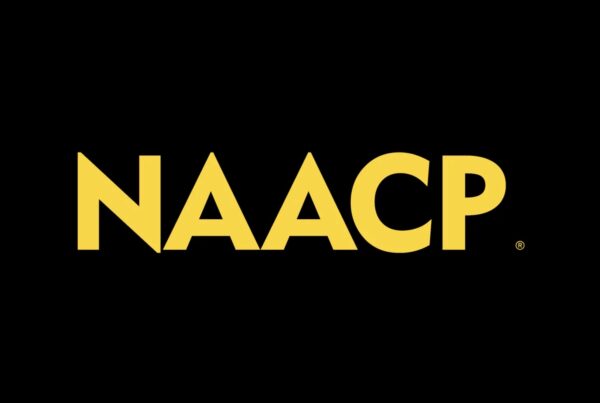
By Dr. Joseph Chuman, Leader
The Supreme Court recently handed down decisions in three church/state cases. None of them should please us. There was a time when Ethical Culture saw separation of church and state as a major issue. We worked in coalition with Americans United for Separation of Church and State, and the AEU routinely passed resolutions affirming that position. I, at one time, was much more active in defending that cause. In trials brought by the ACLU I was a fact witness in defending separation, and I defended religious freedom in testimonies in the New Jersey legislature. I also advocated in other ways. But times change and other issues have moved to the fore.
However, I suspect that there are other reasons why church/state separation doesn’t grab our attention as it used to. One, lamentably, I surmise, is that the issue seems passé. In great measure the battle feels like it is over, and the positions we are now left to defend have been reduced to skirmishes rather than battles.
The issue is fought out primarily in the courts, which, having become much more conservative and responsive to the political power of the Christian right, favor religious freedom over other rights and interests. Today, if upholding the equality rights of a majority is seen as an affront to the “religious freedom” of a few, religion wins.
Increasingly religion is taking over public space. As I see it, there are two great causes for this, which, again, reflect the extraordinary power of religious conservatives. The first is a shift in judicial doctrine. The position I was reared on and socialized to defend was based on the principle that the state could not support religion, or for that matter, non-religion, and that religious doctrine could not be factored into law. The religions could be political actors and lobby for their positions just as anyone else, but sectarian belief could not be the basis of law and policy. In short, law and public policy must reflect a public and secular language accessible to all.
This was the position upheld by the judicial champions of separation such as Hugo Black, William O. Douglas, Thurgood Marshall, and New Jersey’s own William Brennan. But again, as a result of pressure from the right, the Supreme Court now grounds its decisions in a new doctrine, referred to as “accommodation.” While the Establishment Clause of the First Amendment still mandates that the United States not have an official church, short of that, that the state may support religion, including providing financial support, as long as it does not discriminate among the religions.
Let it be said that this is just what the founders did not want. For one thing, non-discrimination is a chimera. It is the powerful churches (read evangelicals especially) that receive government favors at the expense of minority churches, and with it there goes religious freedom.
A second major change results from the Religious Freedom Restoration Act (RFRA) of 1993, which dramatically alters the religious landscape. The RFRA was passed by Congress after the Supreme Court ruled that Indian tribes in Oregon could not use peyote, even though it has been part of their religious rituals for hundreds of years. The bill was supported by an almost unanimous majority of both liberals and conservatives in Congress. It states, “Government shall not substantially burden a person’s exercise of religion even if the burden results from a rule of general applicability.” What this means is that a religiously neutral law can burden a religion just as much as one that was intended to interfere with religion.
The Religious Freedom Restoration Act had unforeseen consequences in expanding religious turf tremendously into what were previously neutral and secular spaces. For example, the notorious Hobby Lobby case—which allowed a private corporation to withhold paying for contraceptive care of its employees because it offended the religious sensibilities of the owners— made ample use of the RFRA. Providing health care was seen as depriving employers of their religious freedom. (Confession: I originally supported the Religious Freedom Restoration Act. I now conclude it was one of the worst political mistakes I ever made.)
Back to the three current Supreme Court rulings:
- The first allows public monies to fund vouchers for religious schools. It is another nail in the coffin of public education and another victory for the destruction of the wall of separation. Accommodation-ism is assuredly in play.
- The second extends the scope of the Hobby Lobby case. The Court ruled that organizations affiliated with churches, such as schools and hospitals, do not have to provide contraceptives under the Affordable Care Act. Score another victory for religious conscience at the expense of up to 126,000 women, many poor, who will lose contraceptive care from their employers.
- The last case is somewhat more conceptually interesting. The Supreme Court ruled that religious organizations, such as schools, could discriminate against teachers, let’s say L.G.B.T.-identified. if it violated religious principles. There is a ministerial carve-out, and the Court sought to include teachers in a Catholic school under it. To a point, the ministerial exception makes sense. If a synagogue is seeking a new rabbi, the search committee, I think most would agree, has a right to reject an applicant who isn’t Jewish. But what about the teachers in religious schools? If we are talking about teachers instructing children in catechism, maybe. But math or English teachers?
The case was brought by two teachers at a Catholic school. Justices Ginsburg and Sotomayor dissented. Justice Sotomayor noted that the teachers in question taught prevailingly secular subjects. She wrote that “the decision would affect employees other than teachers,…coaches, camp counselors, nurses, social-service workers, in-house lawyers, media relations personnel, and many others who work for religious institutions.”
“All these employees could be subject to discrimination for reasons completely irrelevant to their employers’ religious tenets,” she wrote. “The inherent injustice in the court’s conclusion will be impossible to ignore for long, particularly in a pluralistic society like ours.”
I think she got it right. But such is the power of religion these days that it overwhelms other interests, including the right not to be the victim of discrimination.
What all this entails is that the battles to preserve what is left of the wall of separation of church and state will be fought on smaller terrain, and the conflicts will grow more severe. It took 300 years to put the tiger in the cage. Now we are confronted with the need to get it to go back in.







